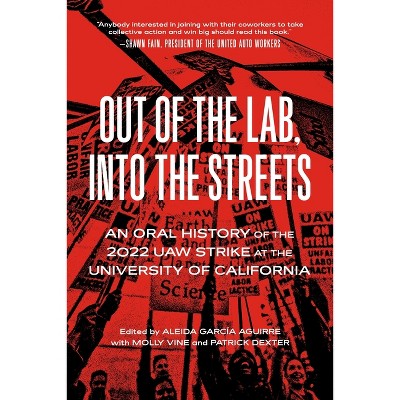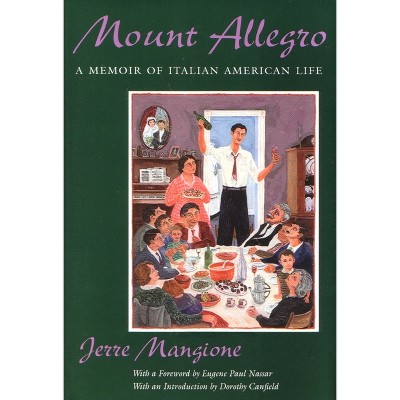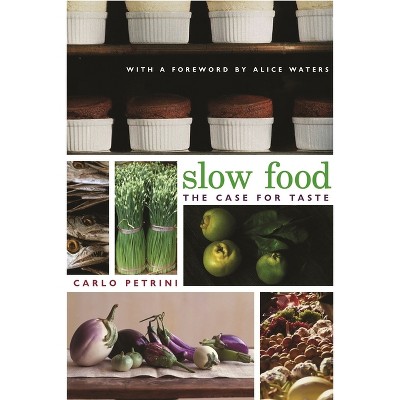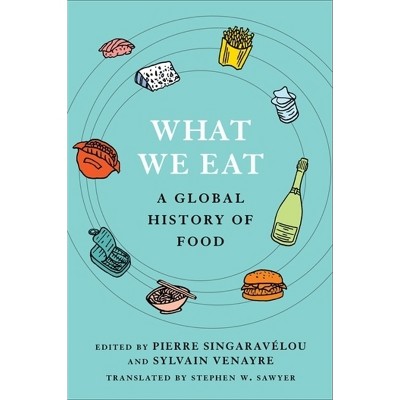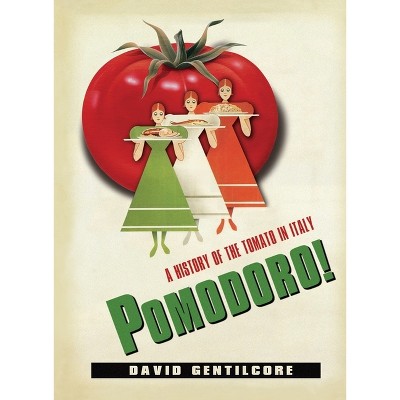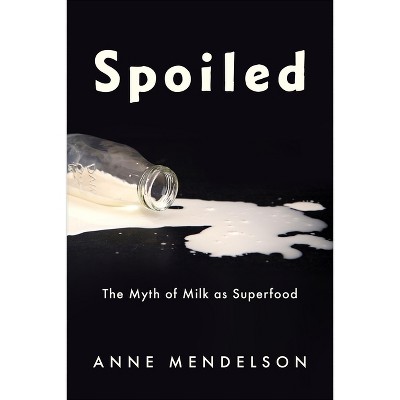Sponsored

What We Eat - (Arts and Traditions of the Table: Perspectives on Culinary H) by Pierre Singaravélou & Sylvain Venayre
In Stock
Sponsored
About this item
Highlights
- Ketchup seems iconically American, but the word comes from a Southeast Asian anchovy sauce, and today it is made largely from Chinese tomato paste.
- About the Author: Pierre Singaravélou is professor of history at Paris 1 Panthéon-Sorbonne University and a former British Academy Global Professor at King's College London.
- 360 Pages
- History, Social History
- Series Name: Arts and Traditions of the Table: Perspectives on Culinary H
Description
About the Book
"A political, social, but also intimate world history of food that brilliantly shows us the tension between the promotion of specific cultural identities and the standardization of habits that we usually associate with globalization. Coffee originated as an Ethiopian drink before becoming a globalized product. Ketchup, a symbol of America, is now made largely from Chinese tomato paste. In this book, two historian editors asked some 70 historians take up the challenge of telling a history of the world through one particular food. As a whole the book attempts to explain globalization through food, examining the Westernization of our eating habits as well as the triumph of non-Western dishes such as ceviche or curry in the West. In 88 short chapters-- by Arundhati Virmani, Pascal Ory, Jean-Robert Pitte, and others--on such topics as gin, the sandwich, sparkling water, port, tapioca, animal crackers, sake, corn flakes, doner kebab, tofu, pizza, the hot dog, bagels, ramen, sushi, naan, guacamole, and many more--the editors examine how food products help us to understand globalization and its limits. Each brief chapter concludes with a short further reading list. The result is an unusual and fascinating journey into the great grocery store of the world"--Book Synopsis
Ketchup seems iconically American, but the word comes from a Southeast Asian anchovy sauce, and today it is made largely from Chinese tomato paste. Japan's beloved ramen arose from the meeting of Chinese noodles and American wheat flour before attaining worldwide popularity in both gourmet and convenience-food forms. The baguette is mythologized as a product of the French Revolution, but in fact it emerged during late-nineteenth-century urbanization. Colonialism brought baguettes to Vietnam, where street vendors devised a new dish: banh mi, which refugees took with them around the world.
Telling these tales and many others, What We Eat explores world history through the lens of the global journeys of nearly ninety food products. Leading historians trace the origins and popularization of items commonly found in supermarkets, showing how each food illuminates wider histories. They consider the tension between the role of cuisine in shaping particular cultural identities and the standardization associated with globalization, and they demonstrate how foods have transformed as different societies have borrowed them. Chapters reveal the surprising sagas of coffee, cornflakes, gin, guacamole, hot dogs, hummus, naan, pet food, pizza, sparkling water, sushi, and many more. At once an intimate and a global history, What We Eat shows readers the everyday items on grocery store shelves in a new light.Review Quotes
Using food as a lens through which to draw out the economic, cultural, and social changes wrought by globalization, contributors highlight both what's lost when foods are stripped of their cultural specificity and how cultural exchange can produce creative and beneficial results. Readers will want to dig in.-- "Publishers Weekly"
This highly original, encyclopedic work contains a wide range of succinct, approachable essays on food through the lens of global power and consumerism. Single-food chapters examine elemental foodstuffs like salt and wine and specific ones like pet food, spam, and yak butter, offering unexpected assertions and novel contributions to the field.--Maryann Tebben, author of Savoir-Faire: A History of Food in France and director of the Center for Food and Resilience, Bard College-Simon's Rock
About the Author
Pierre Singaravélou is professor of history at Paris 1 Panthéon-Sorbonne University and a former British Academy Global Professor at King's College London.
Sylvain Venayre is professor of contemporary history at the University of Grenoble-Alpes. Stephen W. Sawyer is the Ballantine-Leavitt Professor of History and director of the Center for Critical Democracy Studies at the American University of Paris.
